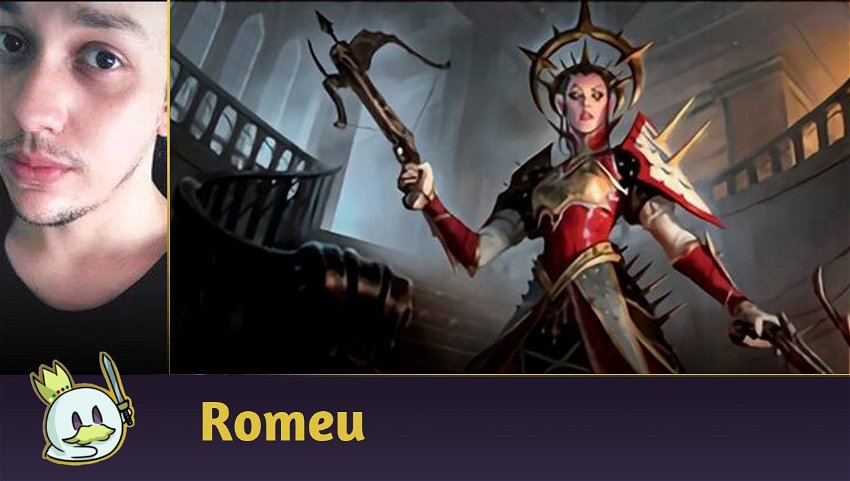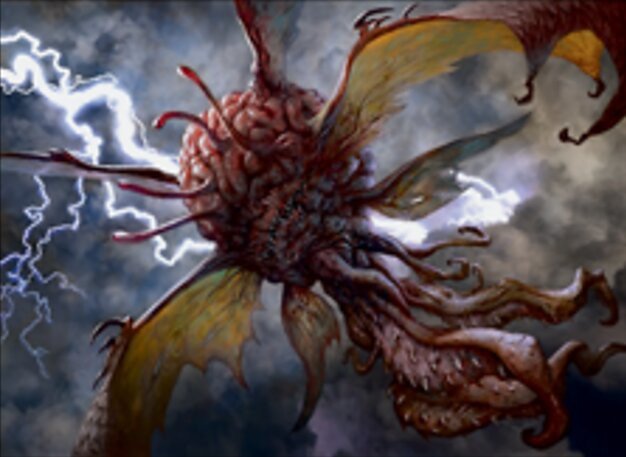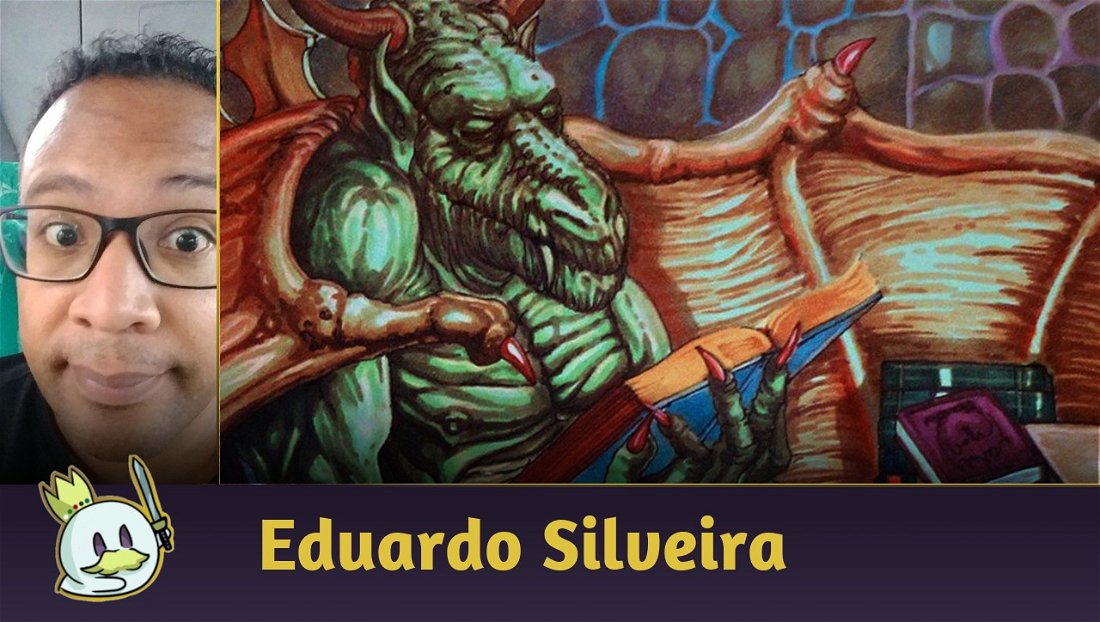One of the essential points of Magic's competitive landscape is to understand when a certain strategy is conducive to the Metagame, and when a certain deck can be at an advantage over the most played decks, and how to adapt to what you expect to face in a specific event.
This exercise is practically daily if you usually play Leagues, and is a weekly exercise for any player who competes in Challenges or other competitive tournaments, as there is a lot of movement in these scenarios among the most played decks, and a deck that is well positioned can be preyed by a lesser played archetype, or by a selection of specific cards.
As for Pioneer, the format finds itself in a moment where two points become essential: Interaction with raveyards and Removals
The format has been at a time when many archetypes seek to use graveyards as a resource, whether it's returning creatures to the battlefield with Lurrus of the Dream-Den, or to play with Treasure Cruise and Dig Through Time, in addition to the clear statement that Izzet Phoenix is still the best deck of the format.
The board interaction, on the other hand, is necessary because 90% of Pioneer games are decided on the battlefield, which leads us to the recurrent need for removals to solve the most diverse creatures, another point that is evident when the most impactful plays involve big threats like Winota, Joiner of Forces.
When we adapt a deck to the format's needs, we can consider it a "meta call", a list that tries to be ahead of the others by using cards that interact very well with current strategies at that time, and I believe the Rakdos Midrange fits in as one of the best meta calls Pioneer has today.
Understanding Rakdos Midrange
Rakdos Midrange essentially operates on a variety of 2-for-1 effects, as you'd expect from any list that fits this archetype, but it has a wide selection of cards aimed at interacting significantly against graveyard decks.
A relevant point that a player might question when seeing this list is why use it instead of Rakdos Arcanist, which theoretically has a more efficient mana curve with the inclusion of Lurrus of the Dream-Den, in addition to better reuse their own spells with Dreadhorde Arcanist, and the answer lies precisely in the proposal of this archetype: Graveyard decks have a huge target in the current Metagame.
With Izzet Phoenix being the best deck of the format, other archetypes that interact with graveyards, including Rakdos Arcanist, suffer a side effect that all opponents are expecting to interact against graveyards, which makes them relatively bad choices because many of them don't have the resilience that Izzet Phoenix demonstrates to play around opponents.
A deck like Rakdos Arcanist, for example, has great answers to deal with the most diverse situations, like Feed the Swarm against Rest in Peace or Abrade against Grafdigger's Cage, but when these cards aren't present, a significant portion of the archetype functions so suboptimally that it gives the opponent too much time to establish their own game plan, there's no pressure in a Dreadhorde Arcanist hitting 1 every turn, and Young Pyromancer, along with its tokens, are easily blocked or dealt with.
So, to bet on a Midrange stance, Rakdos decks may need to move away from Kroxa, Titan of Death's Hunger and get closer to cards that, in the not-too-distant past, were format Staples, like Kalitas, Traitor of Ghet and Chandra, Torch of Defiance, allowing the archetype to reinvent itself and be on the side of the “answer decks”, which seek to cope and adapt to the Metagame.
Maindeck

This allows the archetype to gain a virtual advantage against certain decks, while the rest of the base the archetype operates on works quite well in other games, as none of these creatures are necessarily bad on their own,
Graveyard Trespasser can easily become a 4/4 creature for three mana with a built-in self-protection, and the lifedrain wielded by it is also relevant for speeding up the clock;
Kalitas, Traitor of Ghet is a mighty card against aggressive decks, as it repurposes opponent's creatures and offers a body with Lifelink to significantly delay the clock, as a 3/4 with the potential to grow on the late -game becomes very difficult to interact with damage-based removals, and its ability to create Zombie tokens is significantly relevant against creature decks.
Despite having a more specific function, Go Blank is a powerful card against Izzet Phoenix, while not losing its usefulness in other attrition matchups, especially against Control decks.

The list also features other creatures that offer powerful 2-for-1 effects.
Bonecrusher Giant was a Standard staple, and has been a Pioneer staple for some time now, offering a low-cost removal and a 4/3 body for three mana on the same card, giving the deck greater versatility.
Bloodthirsty Adversary is, in my view, the most powerful Adversary from the Midnight Hunt cycle, as it offers an aggressive body for two mana, and a later payable ability to recast instants and sorceries from your graveyard, while making the creature more powerful.
Initially, Bloodthirsty Adversary may look worse than cards like Goblin Dark-Dwellers, which doesn't see play in Pioneer, but the fact that this ability is an additional cost and can be paid multiple times in a single ETB makes the red vampire a powerful threat.

Chandra, Torch of Defiance is still the most powerful red Planeswalker in Pioneer (and possibly the most powerful Planeswalker in the format), as it offers card advantage and mana advantage with its +1 abilities, while also having one built-in removal (and survives after using it), and one last ability that can essentially win the game in very few turns, especially in a deck with low-cost spells.

If you're playing Black and Midrange in Pioneer, you should probably be playing Thoughtseize, a card that's easily considered the best one mana discard spell ever released in Magic: The Gathering to date, as it has no restrictions as to which it removes from the opponent's resources, and the cost of 2 life is negligible for the advantages offered by it.

The removals package includes some of the most common midrange deck elements in Pioneer these days.
Fatal Push handles most of the format's Early-Game threats, and although this archetype doesn't have the same flexibility as Rakdos Arcanist in enabling Revolt, the other removalscan handle higher-cost threats well.
For example, Dreadbore, of which the list runs three copies, is very useful in, for a low cost, responding to whatever creature the opponent plays, while also having some relevance against the most diverse Planeswalkers.
Bloodchief’s Thirst is a flexible spell that fits like a mix of the above spells. It's important to note that if you cast it through Bloodthirsty Adversary, you can pay the Kicker cost (with additional mana) to increase the card's effect.

Finally, the maindeck utilizes three copies of Kolaghan's Command as one of the best and most flexible spells in Pioneer, and is particularly devastating when recast with Bloodthirsty Adversary, where you can use the spell to return it to your hand, and choose another effect, then cast the creature, pay the additional cost to recast Kolaghan's Command and return another creature, among other effects.

To compose the manabase, the archetype runs a card selection that features some of the best lands available, with Blightstep Pathway and Blood Crypt being able to be played untapped from turn 1.
Haunted Ridge and the rest of the Slow Lands cycle featured in Crimson Vow and Midnight Hunt have proven to be good enough to deserve their own space in Pioneer, and in decks like Rakdos Midrange, the occasions where this land enters tapped are less relevant than the many times you play it from turn 3 onwards.

The list also has a utility lands package, which has different goals in addition to generating mana.
For an attrition deck, Castle Locthwain can generate a lot of card advantage for a very low life cost, allowing its controller to always replenish their hand each turn.
Hive of the Eye Tyrant is another card in the graveyard interactions package that the archetype has, and one that reproduces the effect of Graveyard Trespasser, offering the opponent the constant risk of losing their copies of Arclight Phoenix or Kroxa, Titan of Death's Hunger in the graveyard.
Den of the Bugbear is reminiscent of cards like Legion Warboss or Goblin Rabblemaster and can, on an empty board, create a small army of creatures that will apply a significant amount of pressure to the opponent whenever they cannot interact with it.

The last land in the deck is Shatterskull Smashing, which can also be used as a mini-sweeper against decks with smaller creatures such as Humans, or as a powerful Late-Game removal against larger creatures.
Sideboard

The sideboard offers some additional disruption against spell-oriented decks, especially with three copies of Duress and an additional copy of Go Blank.

There are a variety of archetypes that cannot easily deal with Kroxa, Titan of Death's Hunger, and its inclusion in these matchups can, on many occasions, mean a major resources loss or even victory in the short term, since red removals, for example, have a severe difficulty in dealing with the Giant, while it also works as a recurring threat

We also have more interaction against aggressive lists on the Sideboard, with many of them also serving against graveyard-oriented decks.
Legion's End deals with low-cost creatures, provides information, and is very useful for removing recurrent creatures, without losing usefulness when they are not present, and it also deals pretty well with tokens.
Anger of the Gods is the best red sweeper in the format today, and it's not surprising that the archetype uses it, both as an additional tool against Phoenix decks, and also to deal with Humans, Burn, Naya Winota, or any other archetype that fills the board with creatures.

I don't think the format is so combo-centric that we need Necromentia, but the ability to handle all copies of certain threats (think of Arclight Phoenix again) with just one card and three mana makes it an attractive option for the Sideboard.

Finally, we also have additional copies of cards that help in attrition matchups, where using them often means an advantage in a game where players are constantly exchanging resources.
Deck Analysis
I've tested this list in a few matches and particularly enjoyed the results.
One point that was extremely evident to me is that Rakdos Midrange is a deck built around objectively responding to the current Metagame, with cards that are essentially useful in dealing with the aggressive onslaughts of decks like Humans and Winota, while its threat package is powerful against Izzet Phoenix, and a considerable portion of them have a good body to block Burn's threats, and the discard package is very useful in interacting well against Lotus Combo or Azorius Control.

In this regard, the card that positively surprised me was Bloodthirsty Adversary for its versatility and, obviously, for its powerful interactions on empty boards, or with few threats (something that is not difficult for an archetype with so many removals), while it also functions as a high-impact creature in longer games, and there were times when I had enough mana to cast it along with Go Blank and Kolaghan's Command in the same turn, creating an absolutely devastating situation for my opponent.
However, like every Midrange deck, Rakdos suffers from the same problem these archetypes usually face: the moments when you draw the wrong answers to the situation.
For example, there have been games where the opponent could easily empty their hand when playing multiple creatures in a turn, in situations where I would commonly prefer a removal to deal with the pressure set and instead had a copy of Go Blank in the hand and a Thoughtseize from the topdeck, while my opponent found Collected Company.
However, this is the natural weakness of Midrange decks, and one that the archetype tries to mitigate by constant card advantage, whether by reusing creatures, spells, or by effects like Bonecrusher Giant and Bloodthirsty Adversary.
Another point that I particularly disliked about the deck is the lack of instant-Speed interactions and a clear notion that it has severe issues against decks aimed at direct damage, especially the Burn variants, as our only means of holding and winning this matchup is with Kalitas, Traitor of Ghet.
That said, I really enjoyed the way the deck behaves, the flexibility of its spells, and how the list seems pretty well-built to handle the current Pioneer scenario, so I would recommend it to any player who wants to be on the side of the answers, not threats, or for any player who misses playing Jund in Modern.
Alternate Card Choices

I really want more Instant-Speed interactions, as there were occasions where needing to play everything on my turn didn't open up possibilities for playing around counterspells and other cards.
Possibly, I would trade one copy of Dreadbore and one copy of Bloodchief's Thirst for a copy of Bedevil which has the advantage of dealing with the occasional Ensoul decks and can be replayed from the Graveyard with Bloodthirsty Adversary, or a copy of Murderous Rider, which has the flexibility to be a threat and a good blocker and delay the clock against aggressive decks.

If Winota, Joiner of Forces continues to have a bigger impact on the format in the coming weeks, you might consider adding specific answers to it and other threats to the Sideboard.
I particularly like Fry for also dealing with Teferi, Hero of Dominaria or Jace, Wielder of Mysteries, but Rending Volley is better for mana efficiency, and Noxious Grasp is also available, if the Metagame demands better answers against white or green creatures.

I feel the archetype needs more threats that make decks like Burn think twice about how to spend their resources, so maybe an additional copy of Kalitas, Traitor of Ghet on the Sideboard would be a good idea.
Conclusion
That was my review of Rakdos Midrange, a deck that has shown promising results on Pioneer recently.
I recommend it to any player who wants to feel like they have the means to deal with any situation, and would rather be on the decks side of the answer decks than the threats, as this archetype has shown me to be very efficient at dealing with the main decks of the format.
I also recommend this archetype for players who miss the more Midrange versions of decks like Jund in Modern, or even players who miss powerful interactions with Kolaghan's Command because the feeling I got from piloting it was playing with a Modern deck that no longer fits the standard of the format currently has with the Modern Horizons II's arsenal, such as free spells, Urza's Saga and Ragavan, Nimble Pilferer.
Another point I'd like to make is that Pioneer players pay more attention to cards with high potential used in this list, like Graveyard Trespasser, which has some interesting interactions with the rest of the format, and especially Bloodthirsty Adversary, which proved to be much more than just a flexible version of Goblin Dark-Dwellers.
In my conclusion, I really had a lot of fun using this deck, and I plan to add it to my private Pioneer decks.
Thanks for reading!














— Comments 0
, Reactions 1
Be the first to comment